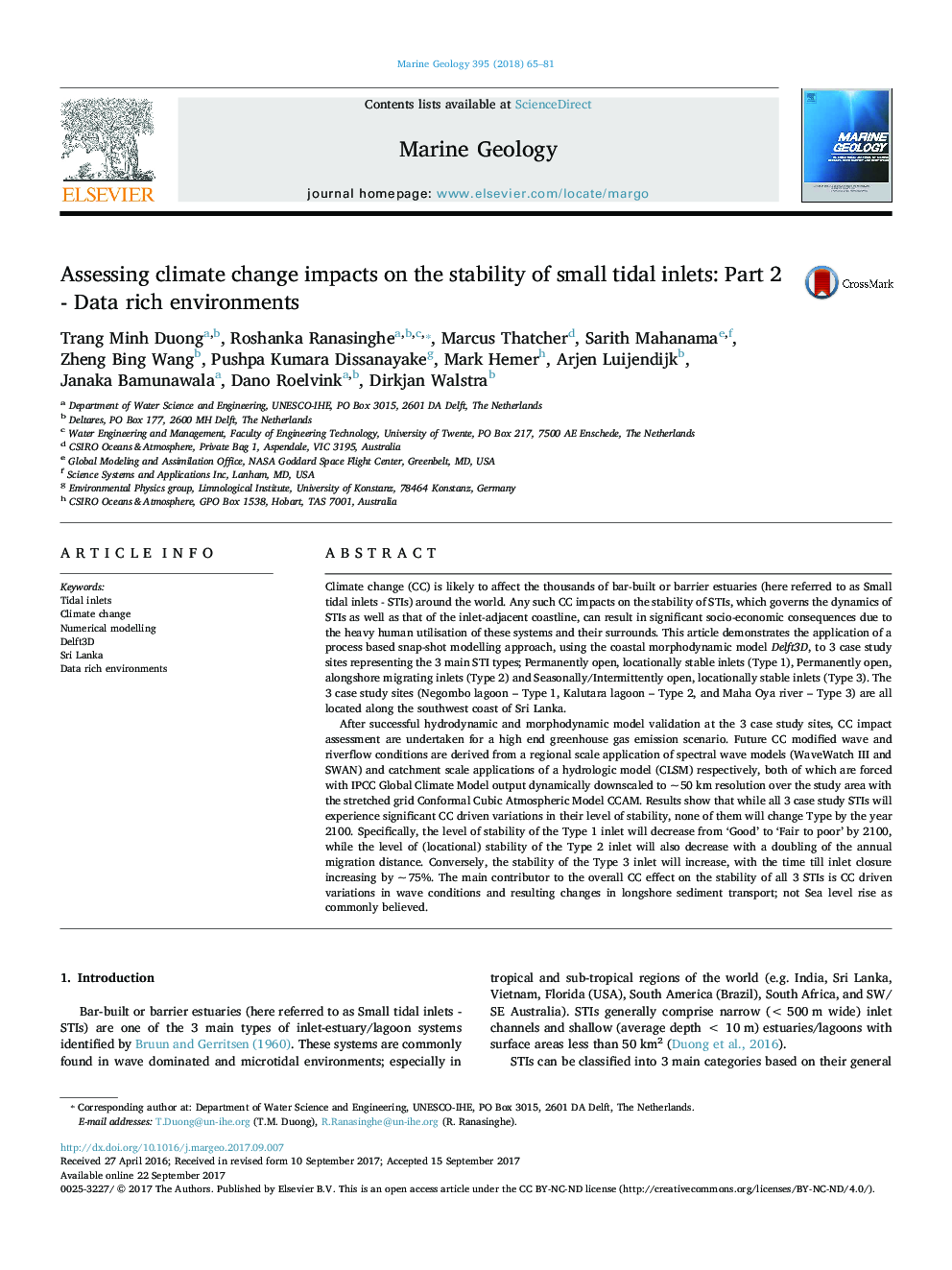| Article ID | Journal | Published Year | Pages | File Type |
|---|---|---|---|---|
| 5784438 | Marine Geology | 2018 | 17 Pages |
Abstract
After successful hydrodynamic and morphodynamic model validation at the 3 case study sites, CC impact assessment are undertaken for a high end greenhouse gas emission scenario. Future CC modified wave and riverflow conditions are derived from a regional scale application of spectral wave models (WaveWatch III and SWAN) and catchment scale applications of a hydrologic model (CLSM) respectively, both of which are forced with IPCC Global Climate Model output dynamically downscaled to ~Â 50Â km resolution over the study area with the stretched grid Conformal Cubic Atmospheric Model CCAM. Results show that while all 3 case study STIs will experience significant CC driven variations in their level of stability, none of them will change Type by the year 2100. Specifically, the level of stability of the Type 1 inlet will decrease from 'Good' to 'Fair to poor' by 2100, while the level of (locational) stability of the Type 2 inlet will also decrease with a doubling of the annual migration distance. Conversely, the stability of the Type 3 inlet will increase, with the time till inlet closure increasing by ~Â 75%. The main contributor to the overall CC effect on the stability of all 3 STIs is CC driven variations in wave conditions and resulting changes in longshore sediment transport; not Sea level rise as commonly believed.
Related Topics
Physical Sciences and Engineering
Earth and Planetary Sciences
Geochemistry and Petrology
Authors
Trang Minh Duong, Roshanka Ranasinghe, Marcus Thatcher, Sarith Mahanama, Zheng Bing Wang, Pushpa Kumara Dissanayake, Mark Hemer, Arjen Luijendijk, Janaka Bamunawala, Dano Roelvink, Dirkjan Walstra,
